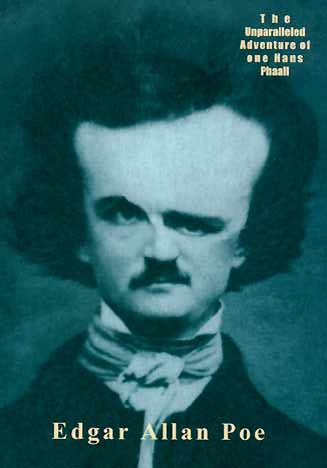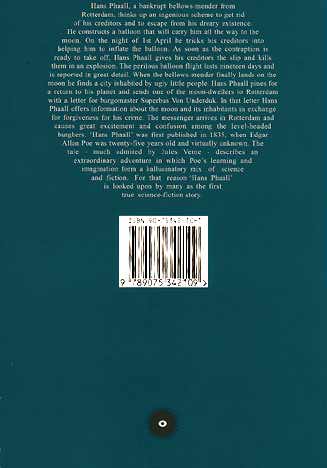Hans Phaall, a bankrupt bellows-mender from Rotterdam, thinks up an ingenious scheme to get rid of his creditors and to escape from his dreary existence. He constructs a balloon that will carry him all the way to the moon. On the night of 1st April he tricks his creditors into helping him to inflate the balloon. As soon as the contraption is ready to take off, Hans Phaall gives his creditors the slip and kills them in an explosion. The perilous balloon flight lasts nineteen days and is reported in great detail. When the bellows-mender finally lands on the moon he finds a city inhabited by ugly little people. Hans Phaall pines for a return to his planet and sends one of the moon-dwellers to Rotterdam with a letter for burgomaster Superbus Von Underduk. In that letter Hans Phaall offers information about the moon and its inhabitants in exchange for forgiveness for his crime. The messenger arrives in Rotterdam and causes great excitement and confusion among the level-headed burghers.
Hans Phaall – A Tale was first published in 1835, when Edgar Allan Poe was twenty-five years old and virtually unknown. The story was later renamed The Unparalleled Adventure of one Hans Pfaall. Forged with Poe’s passion for astronomy and literature it shows influences of such divergent publications as Sir John Herschel’s A Treatise on Astronomy, Washington Irving’s Rip Van Winkle and Rudolph Erich Raspe’s Singular Travels, Campaigns and Adventures of Baron Münchhausen. Hans Phaall – much admired by Jules Verne – is an extraordinary tale in which Poe’s learning and imagination form a hallucinatory mix of science and fiction. It is looked upon by many as the first true science-fiction story.
The Sea Urchin edition combines the first version of the tale with several later, revised versions. Included in it is a short essay on Pure Imagination by Edgar Allan Poe, published in 1849, only months before the author died.


